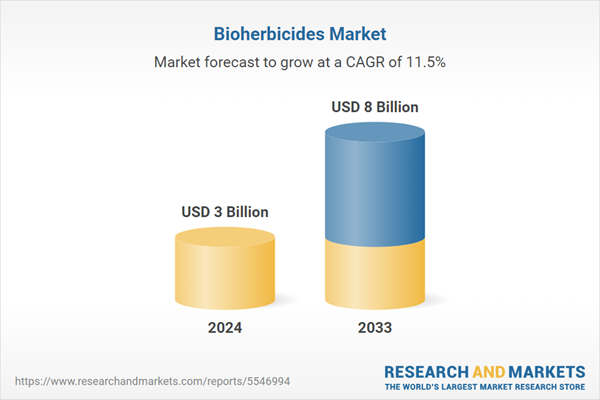Herbicides are a type of pesticides used for killing unwanted plants, also known as weeds, which consume water, sunlight, nutrients and space meant for crops. In recent years, farmers have started using bioherbicides which are bio-based weed control agents made from microbes and certain types of insects. They are environment-friendly and incur a lesser cost than conventional herbicides. Other than this, bioherbicides do not have a negative effect on crops or human health. With the emerging trend of organic farming, bioherbicides are gaining immense popularity across the globe.
Global Bioherbicides Market Drivers:
Over the past few years, the sales of synthetic herbicides have witnessed a decline as they have been shown to harm the beneficial flora in the soil. These chemicals have also been linked to an increased risk of cancer, birth defects and respiratory problems. In line with this, the governments of several nations have introduced strict regulations and awareness programs to encourage organic farming.This has led to a rise in the overall production of bioherbicides across the globe. Moreover, advances in genetic engineering have enabled the development of new-age bioherbicides which act against weeds in a more effective way. Apart from this, the rapid expansion of the food and beverage sector has also contributed to the demand for better-quality bioherbicides.
Key Market Segmentation:
The research provides an analysis of the key trends in each segment of the global bioherbicides market report, along with forecasts at the global and regional levels from 2025-2033. Our report has categorized the market based on crop type, source, mode of application, mode of action and formulation.Breakup by Crop Type:
- Agricultural Crops
- Non-Agricultural Crops
Breakup by Source:
- Microbial
- Biochemical
- Others
Breakup by Mode of Application:
- Seed Treatment
- Soil Application
- Foliar
- Post-Harvest
Breakup by Mode of Action:
- MOA involving Photosynthesis
- MOA Targeting Enzymes
- Others
Breakup by Formulation:
- Granular
- Liquid
- Others
Breakup by Region:
- Asia Pacific
- North America
- Europe
- Middle East and Africa
- Latin America
Competitive Landscape:
The competitive landscape of the market has also been examined with some of the key players being Marrone Bio Innovations Inc., Emery Oleochemicals, Deer Creek Holdings, Verdesian Life Sciences, Certified Organics Australia PTY Ltd, Ecopesticides International, Inc., Special Biochem Pvt. Ltd, MycoLogic, Hindustan Bio-Tech, Bioherbicides Australia PTY Ltd. and Engage Agro USA.Key Questions Answered in This Report
- What was the size of the global bioherbicides market in 2024?
- What is the expected growth rate of the global bioherbicides market during 2025-2033?
- What are the key factors driving the global bioherbicides market?
- What has been the impact of COVID-19 on the global bioherbicides market?
- What is the breakup of the global bioherbicides market based on the crop type?
- What is the breakup of the global bioherbicides market based on the source?
- What is the breakup of the global bioherbicides market based on the mode of application?
- What is the breakup of the global bioherbicides market based on the mode of action?
- What is the breakup of the global bioherbicides market based on the formulation?
- What are the key regions in the global bioherbicides market?
- Who are the key players/companies in the global bioherbicides market?
Table of Contents
Companies Mentioned
- Marrone Bio Innovations Inc.
- Emery Oleochemicals
- Deer Creek Holdings
- Verdesian Life Sciences
- Certified Organics Australia PTY Ltd
- Ecopesticides International Inc.
- Special Biochem Pvt. Ltd
- MycoLogic
- Hindustan Bio-Tech
- Bioherbicides Australia PTY Ltd
- Engage Agro USA
Table Information
| Report Attribute | Details |
|---|---|
| No. of Pages | 136 |
| Published | June 2025 |
| Forecast Period | 2024 - 2033 |
| Estimated Market Value ( USD | $ 3 Billion |
| Forecasted Market Value ( USD | $ 8 Billion |
| Compound Annual Growth Rate | 11.5% |
| Regions Covered | Global |
| No. of Companies Mentioned | 11 |









